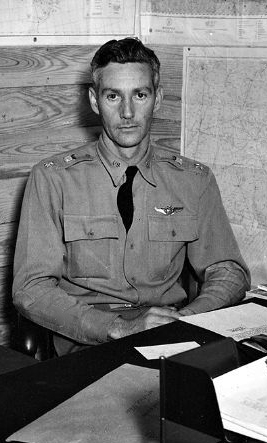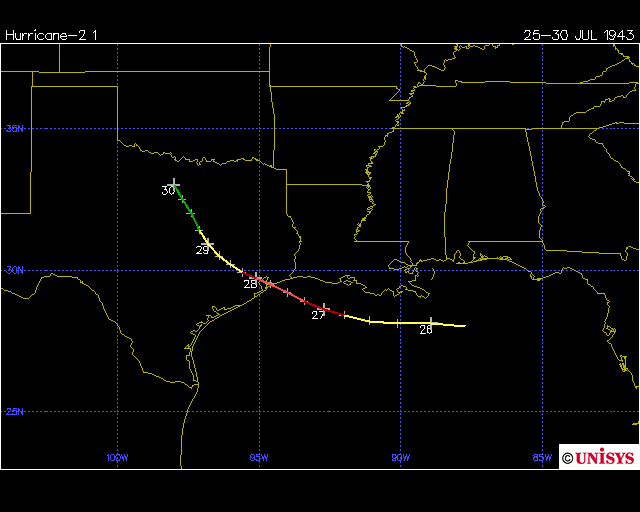
(Columbus and Starkville Dispatch)
On July 27, 1943, U.S. Army Air Forces Lt. Col. Joseph B. Duckworth made the first deliberate flight into the eye of a hurricane. This historic event inaugurated the era of aircraft reconnaissance into tropical cyclones which greatly enhanced our understanding and forecasting of these storms.
Duckworth was an Eastern Air Lines pilot prior to World War II and well-versed in flying on instruments only. Ten years prior, he flew his aircraft through a hurricane threatening Washington, DC. Since many military aircraft prior to the War lacked the instrumentation necessary for night or bad-weather flying, Army Air Forces instructors lacked the skills necessary to teach instrumentation flying to air cadets. When reservist Duckworth was called up in 1940, he was assigned the task of teaching these students instrument flying and wrote many of the instructional manuals on the subject.

(Unisys)
By 1943 he was commanding the instrument training facility at Bryan Army Air Field in Texas, teaching mostly British pilots how to fly on instruments. (It was Royal Air Force policy to fly their bombing missions at night to reduce casualties.) On July 27th, all flying classes were cancelled when a hurricane unexpectedly hit Galveston to the southeast of Bryan. Some say it was on a bet, but it may have just been on a whim, but with his day free, Duckworth decided to fly his AT-6 “Texan” trainer aircraft into the storm. With navigator Lt. Ralph O’Hair along, he encountered moderate turbulence but succeeded in finding the eye to the west of Houston. Upon his return to Bryan Field, the base meteorologist Lt. William Jones-Burdick insisted on being taken up into the storm. So Duckworth headed out again while the weather officer rode in the back seat jotting down notes.
Aunque Duckworth tuvo problemas por realizar vuelos no autorizados, sus superiores decidieron finalmente que era mejor darle una medalla que una reprimenda. Su misión demostró que era posible introducir un avión en un huracán e incluso localizar su ojo. A raíz de ello, ese mismo año se realizaron varios vuelos más en el interior de ciclones tropicales, incluido un vuelo en el interior de un huracán al este de Miami a mediados de agosto, en el que se transmitieron observaciones en tiempo real al Centro de Alerta de Huracanes de Miami para informar por primera vez de sus alertas.
Duckworth’s contributions to pilot instrument training are honored by the Colonel Joseph B. Duckworth Award, an annual prize for the best unit in flight instruction.